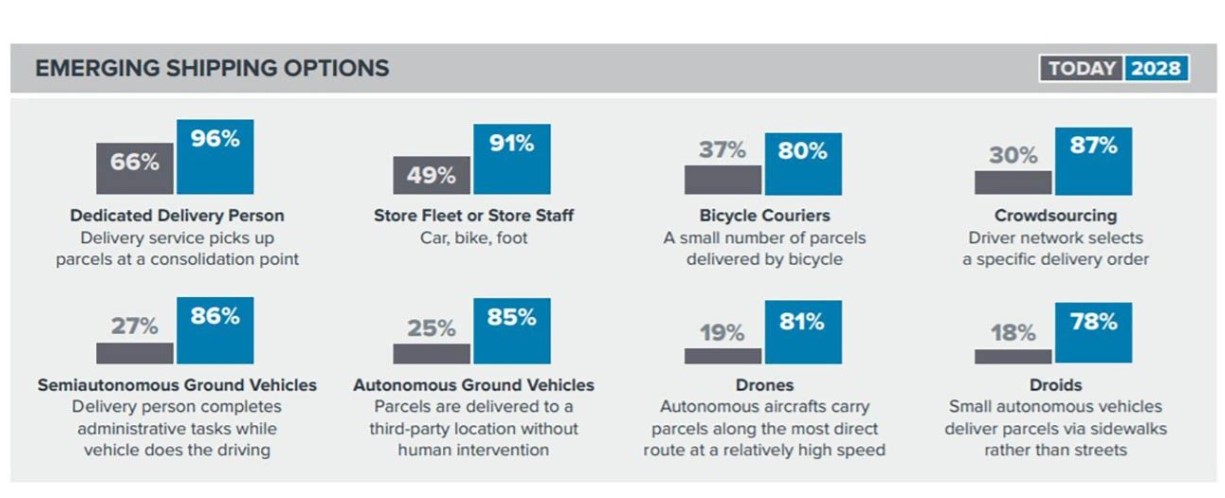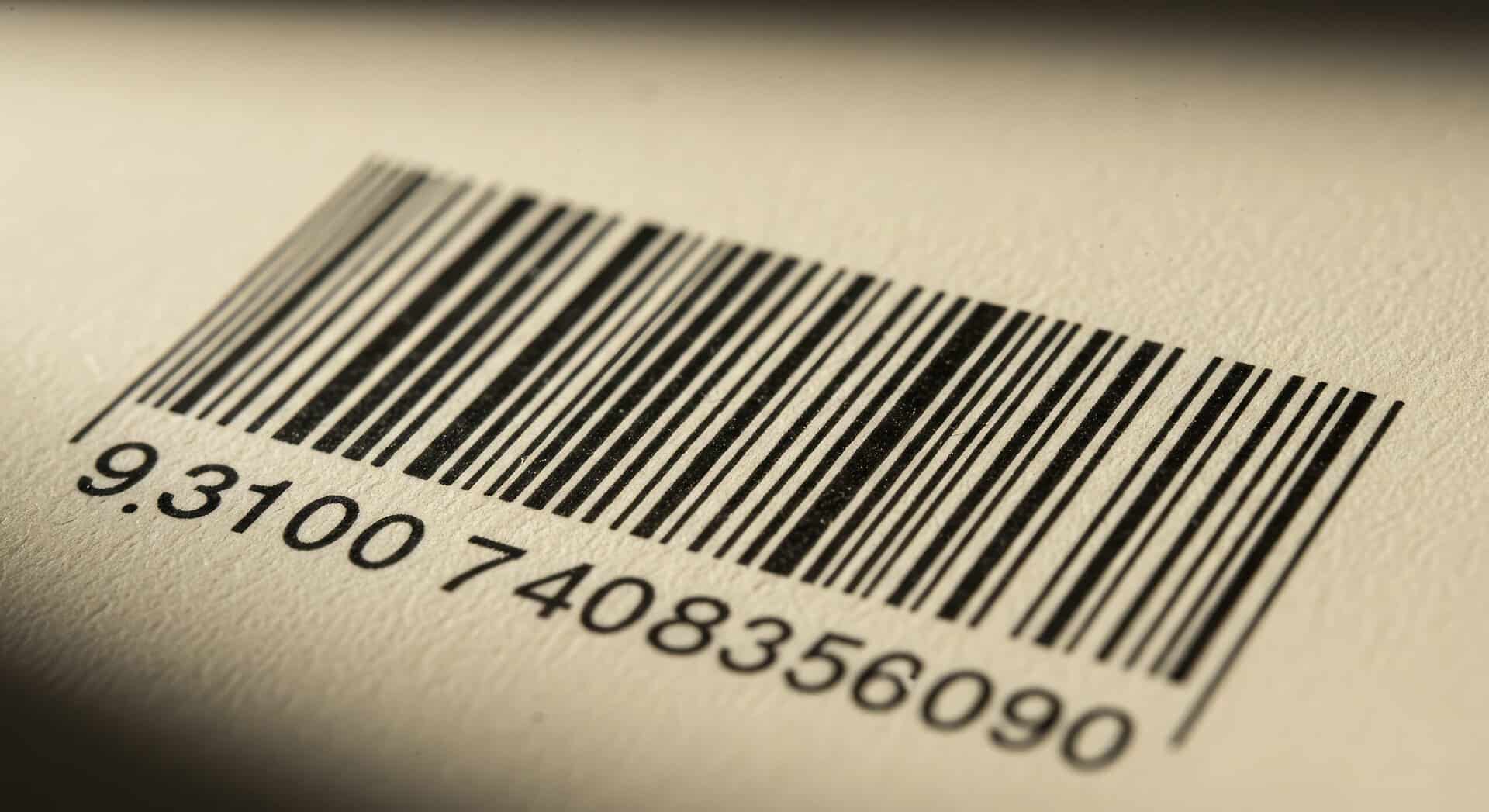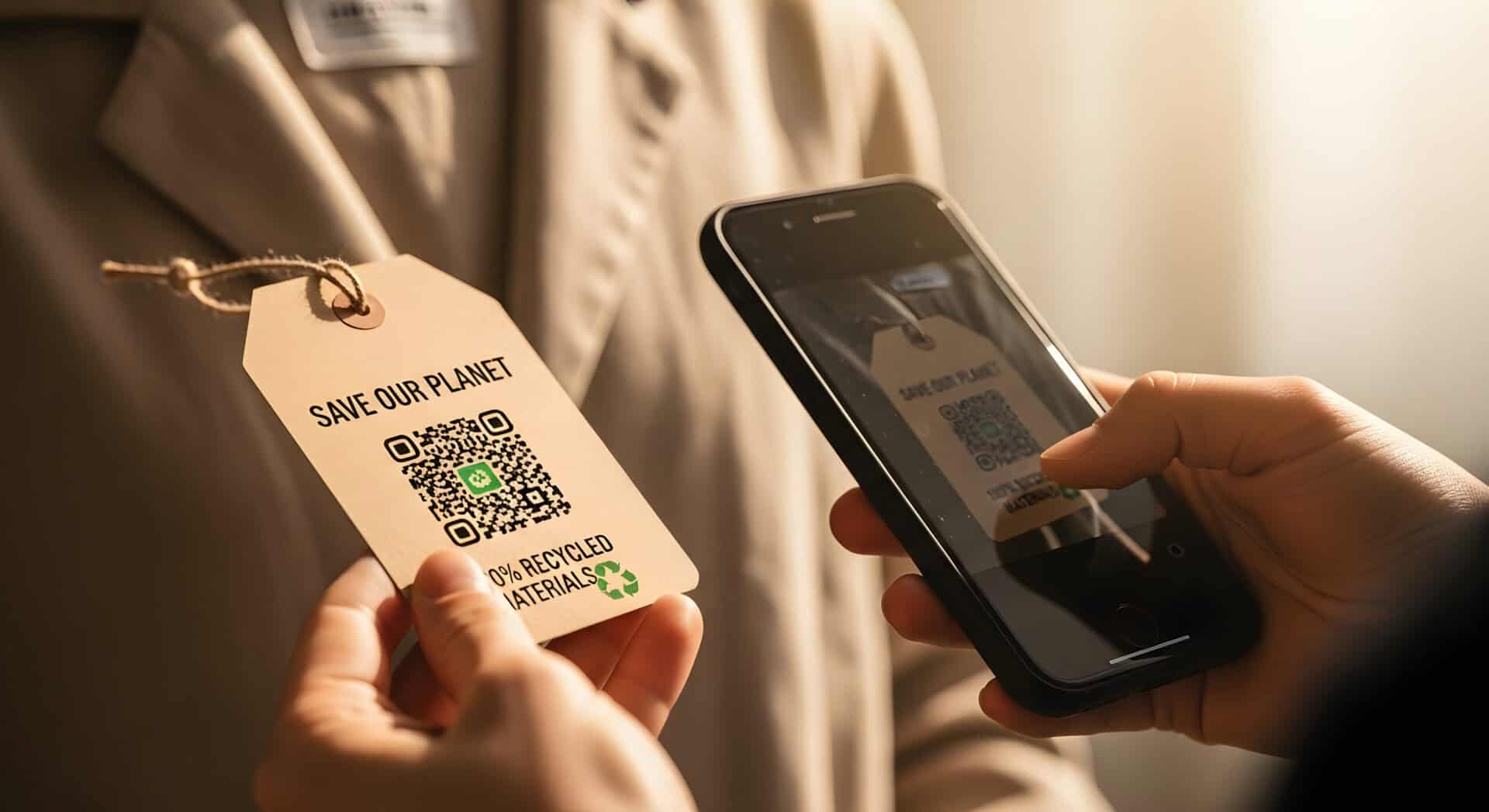Partner Blog
by Mark Wheeler / Zebra
YOU MUST MOBILIZE YOUR FIELD-BASED TEAMS AND THOSE FULFILLING ORDERS WITHIN YOUR FOUR WALLS WITH THE ACTIONABLE INTELLIGENCE NEEDED TO KEEP A LONG LIST OF CUSTOMERS PERFECTLY HAPPY, EVEN AS THEY’RE FIGHTING THROUGH THE REALITIES OF AN IMPERFECT WORLD.
It doesn’t matter if you’re charged with delivering food, flowers, medical supplies, money, parcels or something else, you have one goal: get each order to the right place at the promised time without issue. That’s not easy to do these days, but it is possible – especially if you’re leveraging the right technologies throughout the last mile.
I’m not just talking about drones, droids or autonomous ground vehicles, either. Look at how many different delivery methods are expected to be leveraged by the end of this decade according to Zebra’s latest Future of Fulfillment Vision Study:

I mean, we’ve seen retailers and restaurant owners stand up dedicated delivery teams, wholesalers start to sell (and deliver) direct to the public and third-party delivery companies become more than food couriers in a matter of days! And who would have thought 2020 was the year that the “crowdsourcing” model would gain such favor among manufacturers, merchants, shipping companies and third-party service providers? Not me.
Before the pandemic, it seemed like e-commerce companies had delivery logistics all figured out. They were easily meeting 1-2-day (and, in some cases, 1-2 hour) delivery deadlines. Then, as the world seemed to stop, delivery demand started spinning out of control and it was taking two-plus weeks to get customers what they needed in some cases.
Though small couriers, local businesses and third-party delivery apps were perhaps the most overwhelmed by the initial surge demand for door-to-door delivery services, even the “most prepared” global shippers and postal services have been challenged to keep up with the influx of online and mobile orders placed during what amounted to a year-long “peak season.” Everyone has had to find a way to deliver more packages, make more stops and provide more services as people increasingly prefer to grocery shop, get their prescription medications, send gifts, buy postage and ship packages without ever leaving their homes. People aren’t even going out for takeout as often anymore, instead opting for delivery.
The good news is that things seem to be stabilizing now. But, because they are stabilizing at surge demand levels, anyone involved in the delivery of goods (and many services) must find a way to increase efficiency, collaboration and accountability among fulfillment and field teams to minimize customer, inventory and financial losses. You need to ensure both your field-based teams and those working within your four walls remain unfazed by the unexpected, whether it be a traffic incident or a misreported issue that needs fast resolution. Even the most resilient team members are going to need help staying on time and on task on long, busy days. That’s where technology such as RFID technology comes in.
It can help you:
1. Better Coordinate with Planners, Delivery Partners and Customers
As the saying goes, communication is the key to a successful relationship. Though, one could argue that overcommunication is the key to building lasting relationships with delivery partners and customers. One of the hallmarks of the on-demand economy has been customers’ demand for constant feedback. The other is the constant need for more speed.
Even though delivery providers are becoming more proficient in dispatch, routing and overall resource utilization as shipment and door-to-door service volumes rise, the number of on-time deliveries is declining. A growing number of customers are reporting late arrivals of everything from dinner orders to birthday gifts, groceries and e-commerce purchases promised to be on their doorstep in a couple of days or hours.
Many times, this is due to staffing issues at the point of fulfillment, which can easily be resolved with the right workforce management solution. Other times it’s because gig economy workers and contracted third-party delivery drivers aren’t alerted to assigned runs in a timely manner. This, too, can be fixed with a front-line mobility solution and back-end software built for real-time dispatch and routing communications.
In fact, many of the same mobility solutions used to tell delivery teams what to deliver, where, and when can be used to keep customers in the loop about their orders. With the right enterprise mobility consulting, businesses can ensure these solutions are optimized not only for operational efficiency but also for enhancing customer communication and satisfaction. Every time a status change is reported by the fulfillment team or delivery courier – either via barcode scan of a package or a quick tap in a mobile order management app – customers can receive a text and/or email alert. By keeping them apprised of current delivery timelines, product substitutions and the like, you minimize the number of unpleasant surprises that impact customer satisfaction. Giving customers a direct line to store, restaurant and warehouse fulfillment teams also helps to increase positive resolution rates. If they don’t like what was substituted or need to coordinate a different delivery time, they can communicate their new wishes to the person who will ultimately take that action. In other words, it’s not always best to put customer service and support teams in the middle. That tends to add to customers’ frustration when it comes to time-sensitive delivery issues.
On a similar note, it can be very frustrating for delivery drivers to find out, after they’re in the field, that their vehicle wasn’t loaded in alignment with their planned route. The last thing they want to do when they’re up against the clock is spend 10 minutes trying to find one package in the back of their truck – or having to unload then reload fragile flower bouquets multiple times just to retrieve the right one at each stop. That’s why it’s so critical for drivers and dock teams to collaboratively load vehicles in accordance with route schedules. There are a lot of technology tools that can help ease this process, ranging from simple route planning applications to the more advanced Zebra SmartPack™ solution. This pre-work doesn’t really add much work at all to anyone’s plate and can actually help prevent the delivery delays that leave drivers playing catch-up the rest of the day.
2. Reduce Transit Time by Reducing the Overall Distance Traveled
Better routing isn’t the only way to get packages from your dock door to customers’ front doors faster. Leveraging micro-fulfillment centers (MFC) or converting in-store space to fulfillment-only dark stores that are essentially in customers’ backyards will do the trick, too. I realize that not all businesses may have the option to automate picking or give online order fulfillment teams their own store to pick from. Some will choose to automate fulfillment of those items in highest demand but will still leverage a more manual fulfillment process to fulfill the “long tail” of SKUs to which customers still want access. But, if you do, now would definitely be the time to make such an investment. As my colleague Guy Yehiav reminded us in a recent blog post, “customers don’t care how their orders are fulfilled as long as they arrive at the requested locations at the promised time.”
Whether you decide to set up a micro-fulfillment center or just designate a space in your store only for picking online orders, you’ll want to make sure your associates are equipped with either, handheld, tablet or wearable mobile computers that alert them to incoming orders and allow them to keep track of fulfillment progress. They need to know if and when items are being picked by co-bots or their peers so that they can take the best next steps to put the loading teams on standby, dispatch delivery drivers and replenish store shelves. This visibility also helps to avert oversights and missed orders. Anyone responsible for picking or quality control must be able to text or call customers on the spot when out-of-stocks are identified or substitutions are required. And, speaking of co-bots, if you decide to employ intelligent automation solutions, be sure you do your homework to understand the true capabilities of each platform. Like people, different robots will have different capabilities (and limitations) based on the job they were “trained” to do.
Not able to commit resources for an MFC or want an interim solution while yours is being built? Keep in mind customers don’t care where their orders are fulfilled, either. They just want to receive exactly what they ordered, when it was promised. If you have multiple store locations in a market, and the store closest to the customer can’t fulfill an order until tomorrow but you have another store that’s just a few miles further away with the ability to prep and deliver it today, there’s no reason to make the customer wait. In this case, turnaround time matters more than proximity, as long as you will still be profitable with the added distance factored in. The last thing you want is for the customer to go to a competitor that will go to greater lengths to deliver today. Optimizing the implications for inventory, labor and transportation costs of these scenarios in real time requires new tools and new operational capabilities.
If you don’t have a technology system set up to automatically assign orders to the “first available” source, be sure your store associates have mobile technologies that facilitate easy cross-site communications. Associates can use the hands-free PTT feature on their Bluetooth®-connected headsets to call over to the other store location and request permission to transfer the order into its queue for same-day fulfillment. The associate can then dispatch a driver to pick up the order or alert a dock supervisor to add this order to the next run, if delivery services are managed in house.
Regardless of which direction you take to increase the efficiency of shipping direct from the store (and decrease shipping costs), consider employing a prescriptive analytics solution in store. As you can see in these blog posts, it will be invaluable when it comes to demand planning, inventory management, loss reduction and even social distancing compliance.
3. Do More Than Just Deliver Packages
If you’re looking to boost revenue – or stop the bleed caused by reduced service capacity in brick-and-mortar facilities – expanding your service offerings beyond simple door drops could be your golden ticket back into the black. Not long before the pandemic started, Lithuania Post started equipping postal workers serving rural or remote areas with rugged tablets and mobile printers that enable them to print documents on their daily routes, including proof of delivery, proof of postage, failed delivery notifications, subscription order confirmations and receipts. This solution has become especially handy in the past few years as Lithuania Post decided to deploy smart postal workers instead of post offices in rural areas to bring postal services directly customers’ house. Without this mobile solution, it would have been difficult to implement this modern service model in a cost-saving manner.
Delivery services are now “table stakes” for businesses large and small, local and global. Therefore, the digitalization – and even automation – of fulfillment and last-mile workflows must become a fundamental best practice.
If you’re not sure where to start, or which technology solutions can realistically be implemented within your budget or operational environment, reach out to a Zebra representative or partner to schedule a consult. They’ll help you come up with a plan to surround every member of your team, especially those in the field, with an ecosystem of support so that they can remain unfazed by the unexpected.
###


